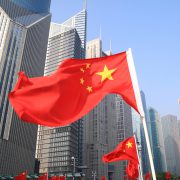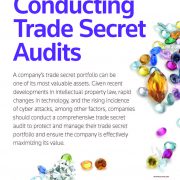Outsourced Manufacturing and Trade Secrets: Manufacturing Process & Personnel (Part 7)

After deciding on the basic corporate or contractual structure, the company should decide how best to strategically divide the manufacturing process. In the outsourced manufacturing context, the best process involves not only efficient manufacture, but also the most effective process to mitigate potential trade secret risks.
To protect its assets, the company must first identify which IP has the greatest value and therefore needs the most structural and contractual protection. To be able to do this properly, the company must first conduct a well-thought-out IP audit, which we have discussed in separate articles.
With respect to trade secrets, contractual protections are insufficient because of the inherent difficulties in enforcing breach of contract and trade secret misappropriation actions – especially in developing countries. Accordingly, practical and structural protection measures are also critical. These measures should be built directly into the outsourced manufacturing relationship. Where practical, the company should divide crucial know-how in a manner that prevents the manufacturer from having access to all of the trade secrets necessary to complete the manufacturing process.
Manufacturing Personnel: Limiting Access and Use
The strictest form of control over the company’s trade secrets and technological assets is to ensure that any manufacturer personnel do not access these assets, by either:
- Having the company handle key aspects of the process or system internally at facilities outside of those of the manufacturer; or
- Where internal treatment is not possible, having company personnel themselves work in the manufacturer’s facility.
If possible, it can be beneficial to allocate different phases of the process to different manufacturers. For example, in car manufacturing, a company may produce the engine or technology-intensive parts internally or through multiple service providers. The division of know-how between different entities can reduce the ability of, and potential harm caused by, a manufacturer that attempts to misappropriate valuable information.
Where the use of different manufacturers is not possible, the company may benefit from separating the process into different phases within a single manufacturer’s organization. The company can require that separate teams of employees and management personnel work on each phase, and that internal firewalls prevent the spread of information between the teams.
To the extent practicable, confidential information should be either or both:
- Provided on a just-in-time and as-needed basis.
- Expunged from the manufacturer’s systems immediately after use.
Contact me with questions or comments.
Related articles:
Outsourced Manufacturing and Trade Secrets: An Economic Overview
Outsourced Manufacturing and Trade Secrets: Outsourced Manufacturing
Outsourced Manufacturing and Trade Secrets: Risks & Benefits
Outsourced Manufacturing and Trade Secrets: Internal Controls
Outsourced Manufacturing and Trade Secrets: Due Diligence
Outsourced Manufacturing and Trade Secrets: Transaction Structure & Contract
David L. Cohen, Esq.
David L. Cohen, P.C. – Kidon IP
123 West 93rd Street
New York, NY 10025
[email protected]
(914) 357-5196








